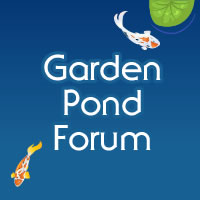If I were to be in your situation, first do all the research on what you want and how to achieve it. You want a chemical free pool. Start by testing the water. Then treat as needed for chemicals present. We recommend the API pond test kit. This will tell you if you have any chlorine remaining, ammonia, etc. If the pool hasn’t been tended in a while, expect ammonia, nitrite, nitrate. That will be from fallen leaves, bugs, and what ever nature blew in. Then, if you have decided that yes, you want to try to make it a pond, research the bog filter. There are threads on here about it. Plan to dedicate a large area to it, and possibly a decent chunk of change, as you will need a strong pump, pipes, ( if above ground, a liner, some form of frame,) and pea gravel. Ideally, you want 1/3 of the surface area of the pool/ pond, and about a foot deep, but others have found success with different ratios, and if you don’t have fish, you could possibly go smaller. For me the first step if the pond was not maintained would be a basic cleaning. Net out and debris, run what ever pump it had, with filter, till the water had no more obvious particles in it, just algae, and didn’t stink of stagnant water. If you have been maintaining it, but are just tired of green water, skip that step. Then buy a pond pump. The ideal rate is to turn the water volume over 1 1/2 times per hour, but that’s for a fish pond, so you decide how much you are willing to spend, and find a good pump that you can work with. For sure go for one that is more than 1000gph, that’s gallons per hour. Let that run just for water movement, and build your bog. Be sure to rinse the gravel well prior to filling the bog, but expect some dirt to end up in the pool. Then once the bog is plumbed, filled, and ready, run it a while with out plants just to see how the water flows. This will show you areas that may not be level, or need a bit of tweaking to get right. Then add plants, and do your research on them. Canna lilies, elephant ears, taro, iris, mint, creeping Jenny, cardinal flowers, various edible plants. I would use my bog as a garden, beautiful and with food, so I can hop out of the pool, and gather garden fresh veggies for a salad or meal and enjoy the flowers at the same time. Now, to supply the nutrients that they will be lacking from the lack of fish, there are various plant root tabs designed for water lilies and lotuses. Or you can decide if fish in the pool are right for you. If you just want beautiful fish, big and colorful, consider shubinkin. They are the calico looking goldfish with long flowing fins, they reach about a foot long Not including tail at adulthood. If you prefer more solid colors, comet goldfish have the same long fins but come in orange, reddish orange, white, or bi colored. The small ones with black on them usually loose the black. Common goldfish come in the same colors but lack the flowing fins. There are other fish options out there. As you are in a typically warm area, research what your low temps are and find fish that can take that weather. Now in high summer, you’ll need floating plants to provide shade, and if you string together pool noodles, you can use that to coral the floaters together for when you choose to swim. You mentioned having kids? If they are younger, I wouldn’t spend much money on fish or in pond plants just yet. Kids enjoy splashing and jumping in, which could damage plants or hurt fish, definitely scare fish. So unless you are blessed with the rare kids who don’t splash around, don’t jump in, want to do belly flips and cannon balls, or other such activities, I would hold off on those. Calmer teens who understand fish like calm, waterlillies like calm water, and are content to just swim peacefully, then try out a few fish. Start small there if/ when you do, like 5 fish ( if goldfish) to let nature grow the beneficial bacteria needed to break down their waste. That becomes plant food after various bacteria break it down. Just remember fish need fed, and pick healthy fish to start with. After that, quarantine new fish in a separate container of water for about a month to observe them for illness or parasites. This lets you treat just the newest batch of fish in a smaller container if it’s needed. If you later add new plants in the pond, there are dips you can do to remove any external parasites, but leaving them in a quarantine container at least for a week let’s you observe them for any creepy crawlers or hitch hikers such as fish eggs that then become unexpected fish.
As for how many fish to get ( if you do) remember that they are living animals, and if you have any male/ female mixing, you’ll have babies. Goldfish can have lots of babies. As in, hundreds. And koi are just bigger, more expensive, more sensitive, goldfish.


